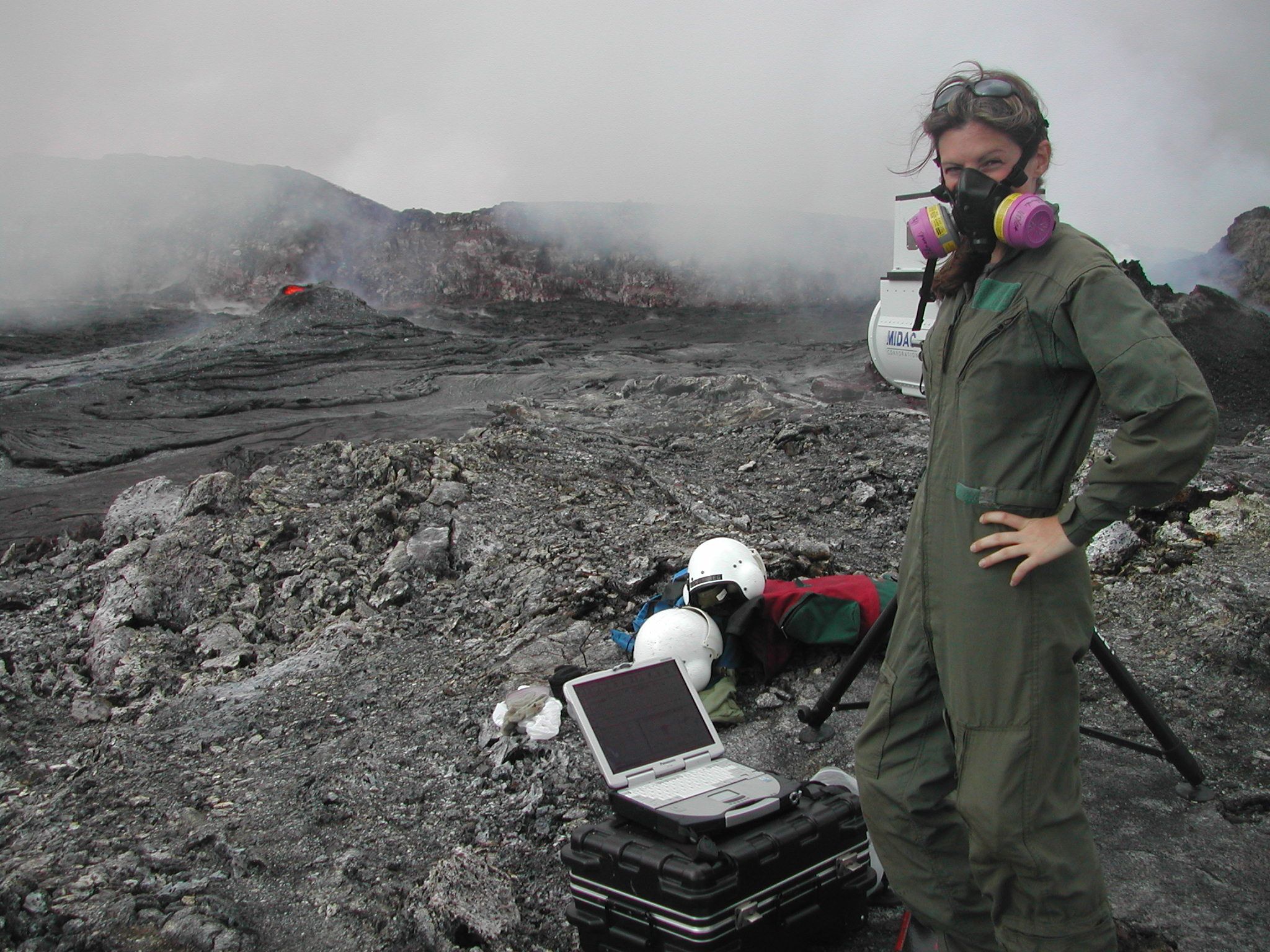New drone technology to advance volanic monitoring
Specially-adapted drones are allowing close-range measurements of dangerous volcanoes, transforming the forecasting of eruptions.

Professor Marie Edmonds, pictured above, is Vice-President of Queens' and the Ron Oxburgh Fellow in Earth Sciences. She is a Professor of Volcanology and Petrology at the Department of Earth Sciences and is co-author on a study published in the journal Science Advances, showing how combined measurements from the air, earth and space can be used to understand volcanic contributions to the global carbon cycle, key to sustaining life on Earth.
The team for this study involved 20 researchers from seven countries and used long-range drones kitted out with a range of lightweight sensors to study the Manam volcano - one of the most active volcanoes in Papua New Guinea.
One of the best ways to detect signs of an impending eruption is to ‘breathalyze’ a volcano by taking regular measurements of volcanic gases. Any change in the ratio of sulfur and carbon dioxide released can warn of an impending eruption. But sampling more remote or hazardous volcanoes like Manam is more challenging.
Using drones equipped with miniaturised gas sensors, spectrometers and sampling devices the team piloted flights right into the plume emerging from Manam’s vent. The measurements captured gas composition, temperature and humidity in real-time.
"Volcanic emissions are a critical stage of the Earth’s carbon cycle - the movement of carbon between land, atmosphere, and ocean – but CO2 measurements have so far been limited to a relatively small number of the world’s estimated 500 degassing volcanoes. Aerial gas measurements, collected along transects through the plume, together with ground-based and satellite data show that Manam is a major volcanic emission source on a global scale, which ranks fifth in terms of its carbon flux.”
